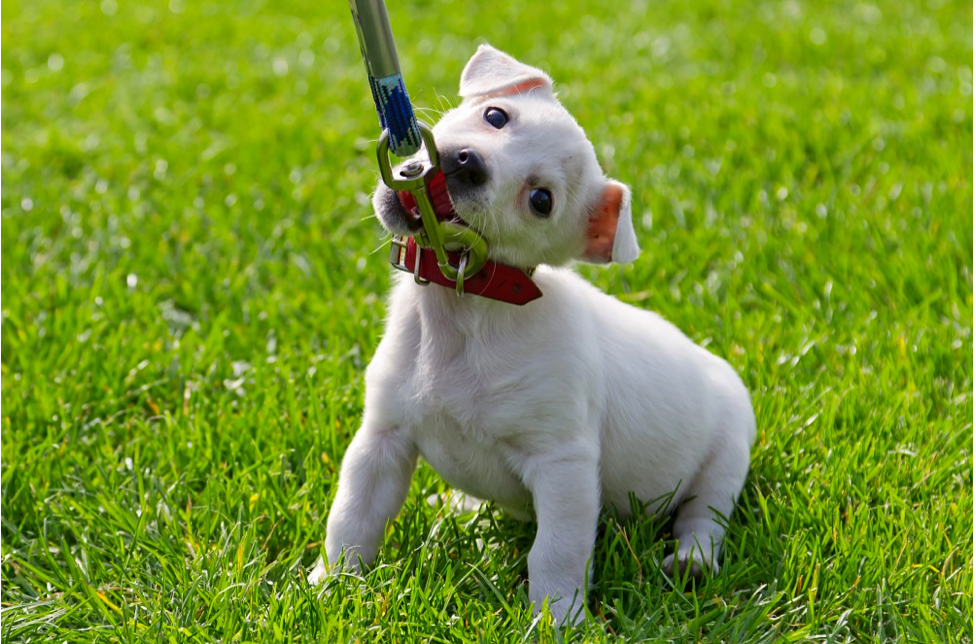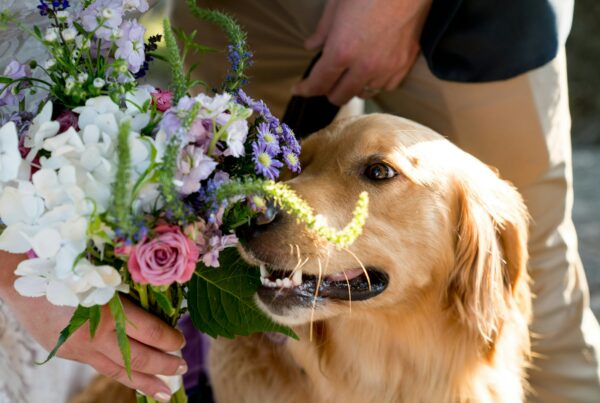When most owners complain about the challenges of dog walking, it is usually because their dog is racing down the street like its favorite fire hydrant is under attack. While it’s true that leash pulling is a more common challenge, some owners have to deal with just the opposite:
Dogs who refuse to move.
It’s easy to chalk this kind of behavior up to stubbornness, but dogs aren’t just in the habit of refusing an owner’s wishes without good reason. There is usually an underlying reason your dog is refusing to walk on a leash and it has nothing to do with training or manners.
Here are some common reasons your dog may hate the leash and ways to help your furry friend out.
Your dog doesn’t like being in uncomfortable gear
A sturdy leash and collar ensures your dog’s safety, but you may not realize that the oversized gear may be dreadful to your dog. A leash’s weight and thickness can feel like an anchor around their neck, especially for small dogs, turning what should be a lovely stroll into a slow, sluggish trudge.
On the other hand it you’re relying on collars that use pain to train your dog, they may have started to negatively associate walks with pain.
Solution: Choose the lightest leash and collar that keeps your dog safe. If you’re still using painful training collars, consider transitioning to a no-pull harness. Review sites like SparkysSpots.com can help you choose the best one. Then grab some treats, a positive attitude and show your dog what life on the open road can really feel like.
Your puppy is shocked by the unfamiliar sensation
It’s easy to forget that your dog isn’t on the same timeline as you. Remember that most puppies are zooming around the house, in constant motion, happy and carefree. The first time they feel the pressure of a leash on their neck may freeze them mid-jump. Encouraging walking by pulling their leash is not the way to go and may end up making your puppy more distraught about what is going on.
Solution: Give your puppy a chance to get acclimated to the leash before her first walk outside. Let your puppy wear the leash around the house as you watch, making sure the leash doesn’t get caught on anything. This process will help her adjust to the sensation of having something around her neck.
After she’s been bouncing around for a bit, pick up the leash without causing any tension in it, call your puppy in a friendly and happy tone and give her a treat when she reaches you. Repeat this process in different rooms of the house and keep the same upbeat vibe. You’re ready to head outside for more fun once she is closely walking next to you in anticipation of her next treat!
Your dog is afraid of the unknown, and that includes outside
Puppies deprived of socialization may grow into nervous dogs that are afraid of leaving their comfort zone. This could manifest in extreme reluctance to go for a walk or downright refusal. It’s common for this kind of fear to show up in other novel situations for your pet like encountering new people or sounds.
Solution: Build your doggie’s confidence by desensitizing things that scare him and rewarding him for being the capable, fearless dog you know he can be! But the key here is baby steps.
Take your dog outside when there are few people and noises and look for any behavior that could be interpreted as going for a walk, and reward it. This can be your dog taking one step toward the sidewalk or just looking at the street. Whatever the behavior, mark it with a chipper “yup” or use an actual clicker and reward him with his most delicious treat. There’s no rush here, take your time and let your dog do the same. He’ll gradually build from a glance to a step to walking.
Your dog is in pain
It’s heartbreaking to discover that instead of being the stubborn girl that she is, your dog is in pain due to a medical issue. A wide range of medical conditions, such as tick-borne diseases, certain cancers and over-activity, can make leash walks unbearable.
Solution: Gently look over your dog for hidden ailments. If your dog has suddenly refused walks, an injury may have occurred. Gradually refusing walks may signal the development of aches and pains. In both cases seeing your vet is the best course of action.
Your dog probably isn’t as stubborn as you think, just waiting on you for a little guidance and help as they figure it all out.




